While water resources are subject to various pressures, particularly climatic and human, it is the development of almost all sectors of activity that suffer in Africa. From agriculture to energy and health. A situation that reminds us of the crucial place of water in sustainable development. On the occasion of the United Nations Conference on Water which takes place from 22 to 24 March 2023 in New York in the United States of America, AFRIK 21 describes the place of water in the process of sustainable development in five points.
A precious good. This is how we describe water today. The resource, which is an integral part of the ecosystem, is underground and surface. In addition, the seas and oceans cover more than 70% of the Earth’s surface, according to the United Nations Environment Programme (UNEP).
With 17 major rivers and 160 lakes that irrigate it, Africa ranks among the continents with the most renewable water resources, with more than 5,400 billion m3 per year. Paradoxically, barely 4% of these reserves are exploited according to the United Nations (UN) and the lack of infrastructure for the exploitation of this raw water particularly impacts the populations who see their activities slow down.
Agriculture uses up to 90% of Africa’s fresh water
One of the sectors that require the most water in Africa is agriculture. “For vegetative growth and development, plants need adequate water in quality and quantity, within reach of their roots and at the right time. Most of the water absorbed by a plant is used to transport dissolved nutrients from the soil to the aerial organs of the plants, from where it is released into the atmosphere by transpiration,” says the Food and Agriculture Organization of the United Nations (FAO). The needs then vary according to the plants and the local climatic conditions.
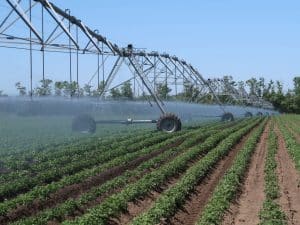
Irrigation System ©P.SH/Shutterstock
To meet their water needs, irrigated crops benefit from both rainwater and irrigation water. The latter is being used more in some countries due to climate change, which has reduced rainfall, exacerbating the pressure on freshwater resources to increase farmers’ resilience to drought and reduce food insecurity. As a result, the sector now uses 70% of the world’s freshwater from lakes, rivers and groundwater. In low-income countries, particularly in Africa, this demand is as high as 90% according to the World Bank.
In Namibia, for example, the government is using water from the Neckartal dam, which will come on line in 2020, to irrigate some 5,000 hectares of grape, alfalfa (a forage plant, very rich in protein used in livestock feed, ed. note) and date plantations in the ǁKaras region, known for its arid climate. The current retention capacity of the structure is 857 million m3 of water.
If water is at the heart of sustainable development today in Africa, it is also thanks to the central role it plays in the production of electricity, particularly through the construction of dams.
The production of electricity in the water cycle
For example, the Neckartal Dam, which provides water for crop irrigation in Namibia, also produces 3.5 MW from a hydroelectric power plant with two Francis turbines installed near the Neckartal Dam. The electricity is fed into the grid of the state-owned company NamPower.
Water from a river can be held back in large quantities by a dam. When the gates are opened, the water flows through pipes to the power plant. The movement of the water turns a turbine, which in turn drives an alternator that produces electricity. This process will allow the future Grand Inga hydroelectric dam, to be built in the west of the Democratic Republic of Congo (DRC), on the Congo River to produce 44,000 megawatts when it is commissioned. At the opening ceremony of the “Pan-African Conference on Grand Inga” on June 22, 2020, DRC President Felix Antoine Tshisekedi presented the challenges of the project, which should make it possible to “meet a significant portion – up to 40% – of Africa’s electricity demand at a competitive price and in a sustainable manner…”.
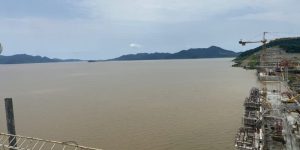
The Great Renaissance Dam in Ethiopia©Eng Seleshi Bekele
In East Africa, Ethiopia is building the Grand Ethiopian Renaissance Dam (GERD), which will be equipped with 13 Francis turbines capable of generating 5,150 MW, or an annual production capacity of 15.76 TWh. The turbines will be installed in two power plants built on both banks of the Blue Nile.
The first unit of the 375 MW hydroelectric plant was inaugurated in February 2022.
The International Energy Agency (IEA) estimates that the amount of water used in this sector could increase to 85% by 2035 worldwide, as global energy consumption is expected to increase by 35% by that time due to population and economic growth.
As much as population growth will require more electricity supply, people will need more freshwater resources for consumption, as well as other living things.
Water, essential to the organism of living beings
According to scientists, water represents between 60 and 65% of the weight of a human being, or 0.05 m3 for a 70 kg individual, with differences related to gender, age and body fat. Upstream of its consumption, the resource is treated or not, depending on whether it is water from the water table, rivers, lakes, seas or oceans. However, African countries still have a long way to go, as the lack of drinking water infrastructure has a particular impact on rural populations.
On average, 418 million people out of the 1.3 billion people in Africa still do not have access to drinking water, even basic water services, according to the United Nations Children’s Fund (UNICEF). This finding is recorded in a report by the Joint Monitoring Programme for Water Supply, Sanitation and Hygiene, developed in collaboration with the World Health Organization (WHO). In addition to the lack of infrastructure, this situation is justified by the unequal distribution of resources, insufficient funding and climate change, which defies all predictions.

Drinking Water Pipe©Roengrit Kongmuang/Shutterstock
Acting more seriously and effectively, this is the recommendation of Unicef to hope to achieve the 6th Sustainable Development Goal (SDG6) which calls for universal access to water and sanitation by 2030 in Africa. Also, “a 12-fold increase in the current rates of progress in safely managed drinking water will be required.” Animals are not left out.
The resource would represent 60% of the weight of mammals and a dehydration of 15% would be fatal. In Botswana, for example, more than 100 elephants were found dead in 2019 in the Chobe National Park in the north of the country due to thirst and starvation.
Water to solve the sanitation crisis
In Africa, diarrheal diseases are the third leading cause of illness and death in children under five. A significant proportion of these deaths can be prevented with safe drinking water, adequate hygiene and sanitation, WHO said in a report in November 2022.
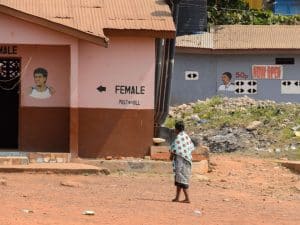
A woman visiting a public toilet in Ghana©Anton_Ivanov/Shutterstock
For Unicef, this will require a 20-fold increase in the current rates of progress in safely managed sanitation and a 42-fold increase in basic hygiene services, given that currently 779 million of Africa’s 1.3 billion people lack basic sanitation services (including 208 million who still practice open defecation) and 839 million lack basic hygiene services.
Resilient projects will also need to be scaled up, given that waterborne diseases have accounted for 40% of climate-related health emergencies in the last two years according to WHO.
Water management, a challenge for biodiversity
The maintenance of biodiversity, which is just as essential for the sustainable development of the African continent, is also dependent on the management of water resources. These freshwater reserves are havens of life for local fauna and flora.
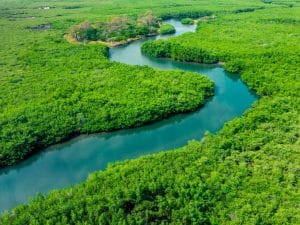
The water that snakes through Africa’s biodiversity©Curioso.Photography/Shutterstock
Africa, which occupies nearly 20.2% of the total land area, is endowed with diverse ecosystems, including deserts and drylands with exceptional flora and fauna. The 17th session of the African Ministers’ Conference on the Environment, held on September 30, 2019, mentioned savannahs with the highest diversity of ungulates in the world (a category of mammals with one or more hooves on the end of their limbs), tropical forests, mangrove forests in southern Mauritania, in the Saloum delta in Senegal, in parts of Sudan and in central African countries, tropical dry and humid forests, island and coastal ecosystems, wetlands around freshwater bodies such as rivers, lakes and estuaries, urban and semi-urban systems and agrosystems.
Treasures of biodiversity that would not exist and live without the presence of “water”, whose management is still in its infancy in several regions of Africa.
Inès Magoum

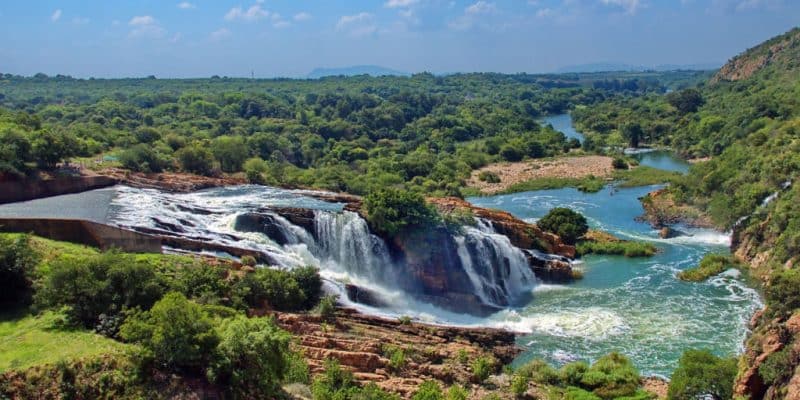




You must be logged in to post a comment.